星巴克咖啡CIS案例教学文案
- 格式:doc
- 大小:556.50 KB
- 文档页数:7
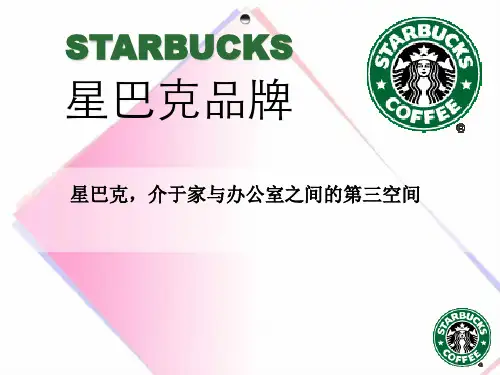
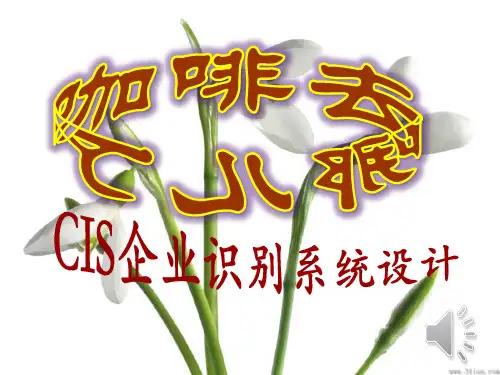
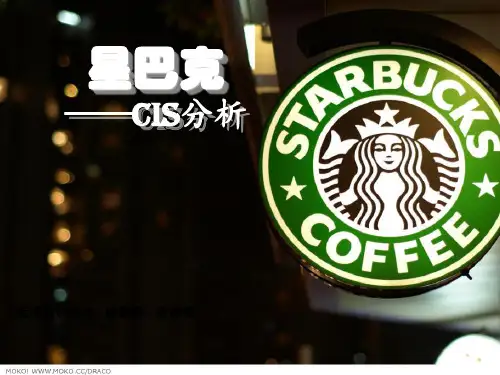
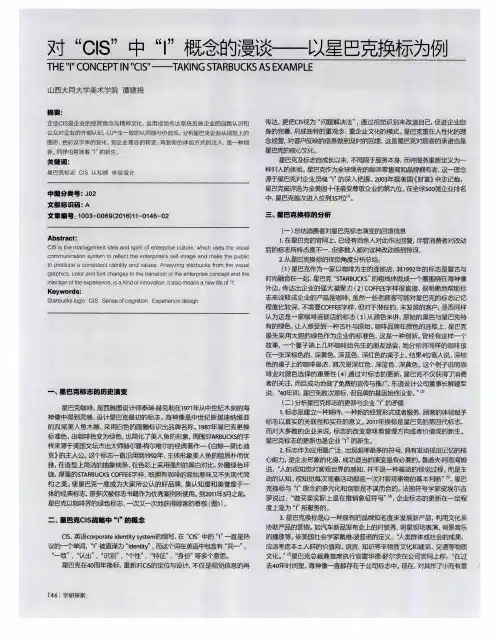
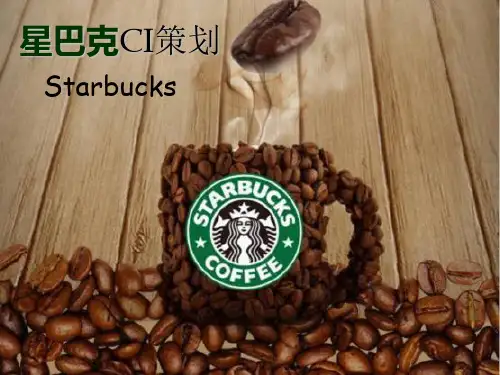
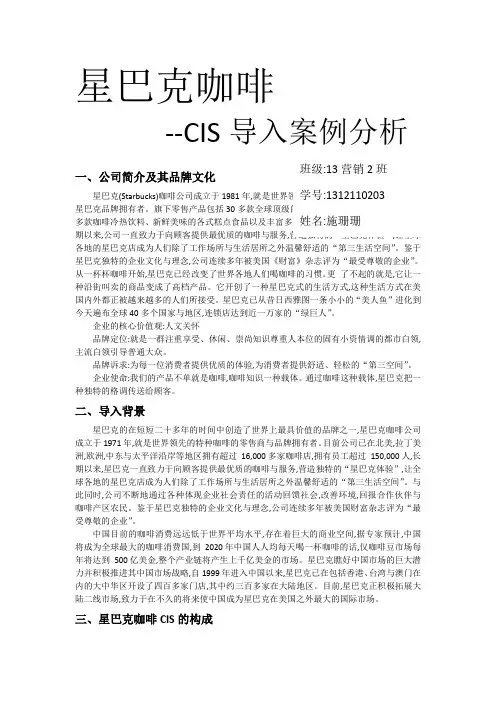
星巴克咖啡--CIS导入案例分析星巴克(Starbucks)咖啡公司成立于1981年,星巴克品牌拥有者。
旗下零售产品包括30多款咖啡冷热饮料、期以来,公司一直致力于向顾客提供最优质的咖啡与服务,各地的星巴克店成为人们除了工作场所与生活居所之外温馨舒适的“第三生活空间”。
鉴于星巴克独特的企业文化与理念,公司连续多年被美国《财富》杂志评为“最受尊敬的企业”。
从一杯杯咖啡开始,星巴克已经改变了世界各地人们喝咖啡的习惯。
更了不起的就是,它让一种沿街叫卖的商品变成了高档产品。
它开创了一种星巴克式的生活方式,这种生活方式在美国内外都正被越来越多的人们所接受。
星巴克已从昔日西雅图一条小小的“美人鱼”进化到今天遍布全球40多个国家与地区,连锁店达到近一万家的“绿巨人”。
企业的核心价值观:人文关怀品牌定位:就是一群注重享受、休闲、崇尚知识尊重人本位的固有小资情调的都市白领,主流白领引导普通大众。
品牌诉求:为每一位消费者提供优质的体验,为消费者提供舒适、轻松的“第三空间”。
企业使命:我们的产品不单就是咖啡,咖啡知识一种载体。
通过咖啡这种载体,星巴克把一种独特的格调传送给顾客。
二、导入背景星巴克的在短短二十多年的时间中创造了世界上最具价值的品牌之一,星巴克咖啡公司成立于1971 年,就是世界领先的特种咖啡的零售商与品牌拥有者。
目前公司已在北美,拉丁美洲,欧洲,中东与太平洋沿岸等地区拥有超过16,000 多家咖啡店,拥有员工超过150,000 人,长期以来,星巴克一直致力于向顾客提供最优质的咖啡与服务,营造独特的“星巴克体验”,让全球各地的星巴克店成为人们除了工作场所与生活居所之外温馨舒适的“第三生活空间”。
与此同时,公司不断地通过各种体现企业社会责任的活动回馈社会,改善环境,回报合作伙伴与咖啡产区农民。
鉴于星巴克独特的企业文化与理念,公司连续多年被美国财富杂志评为“最受尊敬的企业”。
中国目前的咖啡消费远远低于世界平均水平,存在着巨大的商业空间,据专家预计,中国将成为全球最大的咖啡消费国,到2020 年中国人人均每天喝一杯咖啡的话,仅咖啡豆市场每年将达到500 亿美金,整个产业链将产生上千亿美金的市场。
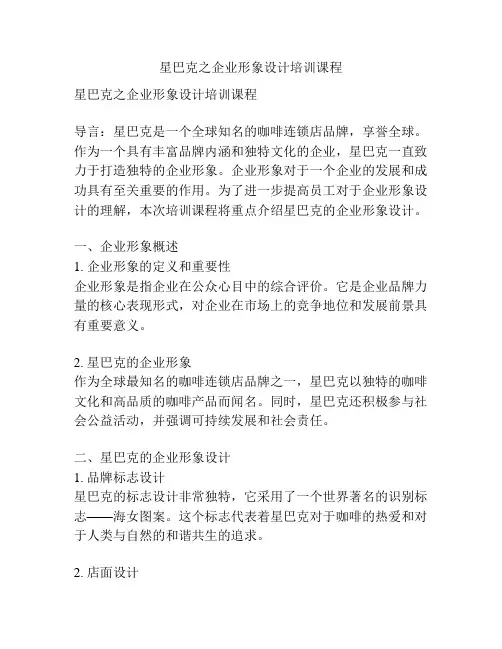
星巴克之企业形象设计培训课程星巴克之企业形象设计培训课程导言:星巴克是一个全球知名的咖啡连锁店品牌,享誉全球。
作为一个具有丰富品牌内涵和独特文化的企业,星巴克一直致力于打造独特的企业形象。
企业形象对于一个企业的发展和成功具有至关重要的作用。
为了进一步提高员工对于企业形象设计的理解,本次培训课程将重点介绍星巴克的企业形象设计。
一、企业形象概述1. 企业形象的定义和重要性企业形象是指企业在公众心目中的综合评价。
它是企业品牌力量的核心表现形式,对企业在市场上的竞争地位和发展前景具有重要意义。
2. 星巴克的企业形象作为全球最知名的咖啡连锁店品牌之一,星巴克以独特的咖啡文化和高品质的咖啡产品而闻名。
同时,星巴克还积极参与社会公益活动,并强调可持续发展和社会责任。
二、星巴克的企业形象设计1. 品牌标志设计星巴克的标志设计非常独特,它采用了一个世界著名的识别标志——海女图案。
这个标志代表着星巴克对于咖啡的热爱和对于人类与自然的和谐共生的追求。
2. 店面设计星巴克的店面设计以简洁、舒适、现代为特点。
色彩搭配简洁明快,空间布局合理,为顾客提供了一个放松身心的休闲环境。
3. 咖啡文化营造星巴克致力于传播咖啡文化,通过提供高品质的咖啡和舒适的咖啡店环境,营造出浓厚的咖啡文化氛围。
星巴克还举办各类咖啡活动和咖啡课程,让顾客更深入地了解咖啡的文化和制作过程。
4. 社会责任和可持续发展星巴克积极参与各类社会公益活动,关注环境保护和社会责任。
通过推行可持续发展战略,星巴克确保其产品的可持续性,并为社区作出贡献。
三、建立良好的企业形象的关键因素1. 品牌一致性星巴克在全球范围内保持了品牌形象的一致性,无论是店铺装修、员工着装还是产品质量,都可以给顾客带来熟悉和信任的感觉。
2. 顾客体验星巴克注重顾客的体验,提供高品质的产品和优质的服务,以及舒适的店面环境,让顾客愿意成为忠实的星巴克顾客。
3. 社会影响力星巴克通过积极参与社会公益活动和关注可持续发展问题,树立了良好的社会形象,赢得了消费者的认可和支持。
![星巴克cis分析[行业严选]](https://uimg.taocdn.com/2e3f2ee801f69e31433294d7.webp)
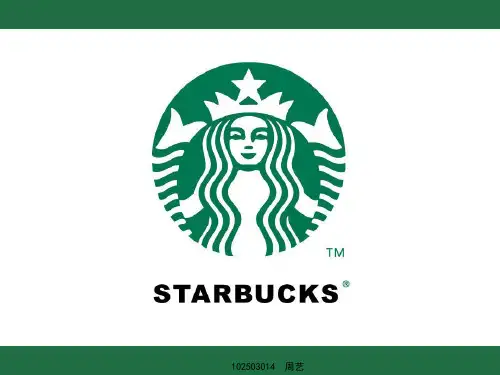
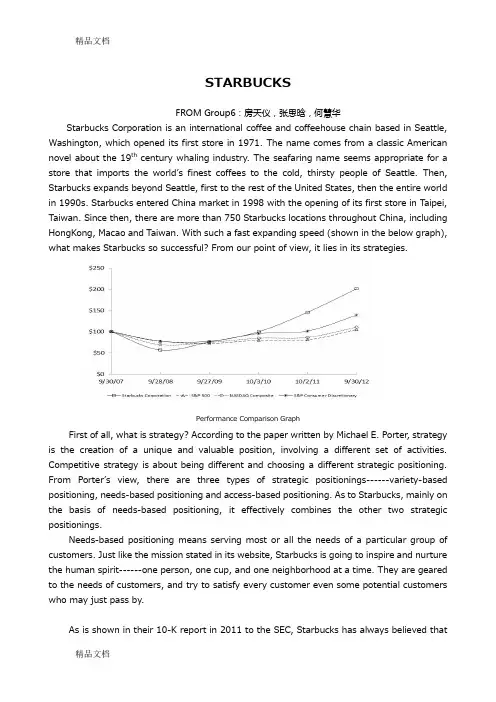
STARBUCKSFROM Group6:房天仪,张思晗,何慧华Starbucks Corporation is an international coffee and coffeehouse chain based in Seattle, Washington, which opened its first store in 1971. The name comes from a classic American novel about the 19th century whaling industry. The seafaring name seems appropriate for a store that imports the world’s finest coffees to the cold, thirsty people of Seattle. Then, Starbucks expands beyond Seattle, first to the rest of the United States, then the entire world in 1990s. Starbucks entered China market in 1998 with the opening of its first store in Taipei, Taiwan. Since then, there are more than 750 Starbucks locations throughout China, including HongKong, Macao and Taiwan. With such a fast expanding speed (shown in the below graph), what makes Starbucks so successful? From our point of view, it lies in its strategies.Performance Comparison GraphFirst of all, what is strategy? According to the paper written by Michael E. Porter, strategy is the creation of a unique and valuable position, involving a different set of activities. Competitive strategy is about being different and choosing a different strategic positioning. From Porter’s view, there are three types of strategic positionings------variety-based positioning, needs-based positioning and access-based positioning. As to Starbucks, mainly on the basis of needs-based positioning, it effectively combines the other two strategic positionings.Needs-based positioning means serving most or all the needs of a particular group of customers. Just like the mission stated in its website, Starbucks is going to inspire and nurture the human spirit------one person, one cup, and one neighborhood at a time. They are geared to the needs of customers, and try to satisfy every customer even some potential customers who may just pass by.As is shown in their 10-K report in 2011 to the SEC, Starbucks has always believed thateffective innovation is about responding to, predicting and creating customers’ needs while staying true to their core values. Starbucks is dedicated to providing each customer a unique Starbucks Experience. The Starbucks Experience is built upon superior customer services as well as clean and well-maintained company-operated stores that reflect the personalities of the communities in which they operate, thereby building a high degree of customer loyalty.Firstly, what we want to say is its quality. Starbucks is passionate about ethically sourcing the finest coffee beans, roasting them with great care. According to their Form 10-K report to the SEC, to ensure compliance with their rigorous coffee standards, they control coffee purchasing, roasting and packaging, and the global distribution of coffee used in their operations. They purchase green coffee beans from multiple coffee-producing regions around the world and custom roast them to their exacting standards, for their many blends and single origin coffees. This king of high quality meets the demand of some specific customers who have a high request for the quality of the coffee. And there are few coffee stores can achieve such standard. From STARBUCKS CORPORATION Form 10-K for the Fiscal Year 2011, beverages account for most of Starbucks’ retail sales, as well as whole bean and soluble coffees also for a small part, which indicates its good performance of its coffee’s quality.Secondly, their considerate service and convenience is also of great importance. People have consumer packaged goods including both domestic and international sales of packaged coffee and tea to grocery and warehouse club stores. They can have breaks from the worries outside, so Starbucks have stores where you can meet with friends, enjoying the elegant environment intimate services, like the heat insulation paper and a variety of tables and chairs giving you a different mood. According to their Form 10-K report to the SEC in 2011, their mainly competitors are quick-service restaurants and specialty coffee shops. However, the combination of different kinds of service makes Starbucks an obvious advantage compared to them, as well as customers’ loyalty.Thirdly, Starbucks as a multinational corporation, their branch stores in different countries have their special products to meet local people’s demands. T ake their Chinese branch stores as an example, in order to gain a larger share in Chinese market, Starbucks has to work out plans to develop new products to cater to the consumer demands for Chinese and sometraditional Chinese festivals. For instance, they combine Chinese tea to western coffee to create a wonderful flavor popular to both Chinese and westerners. What’s more, they also have Chinese Zongzi (traditional Chinese rice-pudding) on Dragon Boat Festival and Mooncakes on Mid-autumn Festival. All of these can measure their needs-based positioning.Besides the needs-based positioning, Starbucks also uses variety-based positioning. According to the Porter’s paper, variety-based positioning is based on the choice of products or service varieties, which makes economic sense when a company can best produce particular products or services using distinctive sets of activities. When it comes to Starbucks, although they have some other products to meet different demands of customers, they are still dedicated to providing high-quality green coffee, which is their most important business and they have a perfect coffee production chain.What’s more, Starbucks also uses the access-based positioning, which means having a different set of activities to reach customers in the best way. And this can be measured as follows. As is shown in the Form 10-K report to the SEC in 2011, Starbucks has both company-operated stores and licensed stores to make more people have access to its products. What we can know from the Investors section on Starbucks website and the Form 10-K report to the SEC in 2011, Starbucks has 10787 US stores and 6212 international stores, and licensed stores are accounted for nearly 50%. They vary the size and format of their stores, which allows them in or near a variety of settings, including downtown and suburban retail centers, office buildings, universities, campuses and in select rural and off-highway locations. And to provide a greater degree of access and convenience for non-pedestrian customers, they continue to selectively expand development of drive-thru retail stores. In addition, they also sell products in some supermarkets and shopping mall which makes Starbucks easier to reach more customers.Last but not least, according to The Social Responsibility section of Starbucks website, they are aimed to be a responsible company, which makes them gain a very good reputation. And we’re sure that this strategy is especially important in today’s China, of course, and many other countries. Starbucks makes every effort to have a positive impact on the communities they serve. They hold the view that every store is part of community and they take their responsibility to be good neighbors seriously. Besides, they’re committed to offering high-quality, ethically purchased and responsibility produced products by using ethical sourcing. What’s more, they try to minimize their environmental footprint, protecting the environment. In addition, they promise to have global responsibility report which is beneficial to the investors,society and some other shareholders.To sum up, Starbucks not only has a sustainable strategic position, but also has the fit among their operating activities. All of these have substantially reduced their cost and increased their differentiation, making Starbucks a big success.We have talked about the strategy and the measurement of these strategies. Then we use the Porter's Five Forces Model to measure the force of this strategy.➢Bargaining power of suppliers:As having superior brand advantage, Starbucks suppliers benefit from a good brand. Long-term cooperation with Starbucks will enhance the reputation of the supplier, they may receive more orders. On the other hand, there are a plenty of Coffee bean suppliers in the world.so that it’s easy for Starbucks to buy the best coffee beans in the world. So, for Starbucks, supplier's bargaining power is relatively weak.➢Bargaining power of buyers of customersBesides coffee market competition is intense, the world's coffee brand quality is also very good. Buyers’ choices are very big, so for Starbucks buyers bargaining power is relatively strong. In order to make up for the defect, as we said before, Starbucks cultivate loyal customers. According to Starbucks experience, walking into Starbucks customers can not only enjoy the delicious coffee, there will be a kind of very relaxed feeling. It is this high quality products and satisfactory service of Starbucks that making it to have a big share in the international coffee market.➢the threat of new entrants for an industryAlthough more and more famous coffee brands come up in the world, the consumers to choose coffee pay more attention to brand, so the industry barriers to entry is high.➢➢the threat of substitute productsThere are substitutes for coffee such as fruit juice, milk, soda, and tea, and so on. But because of Starbucks coffee can provide the experience, to provide customers leisure places. More importantly, in today’s china, Starbucks is luxury consumption for a small group of people,rather than the general public. So this power is weak too.➢the intensity of competitive rivalryAs we mentioned above, there are plentiful society competitors. It’s obvious that this competition is fierce. But as the same to the second point, Starbucks try to use its strategy to solve this problem.According to Porter's Five Forces Model, it’s easy for us to find out that the strategy of Starbucks is effective. However, more and more coffee brands pay attention to the customer experience, it’s essential for Starbucks to achieve strategic continuity.。
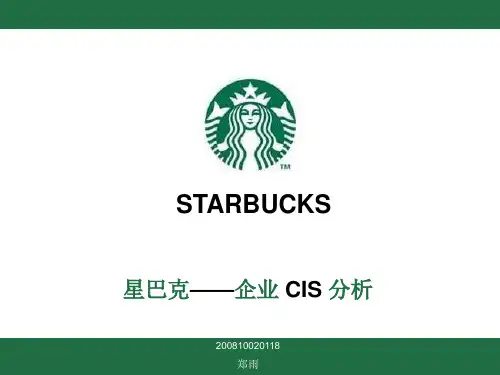
CIS案例分析CIS 这个概念,对于很多人来说可能有点陌生,但在商业世界里,它可是个相当重要的家伙!CIS 全称是 Corporate Identity System,也就是企业形象识别系统。
今天,咱们就来好好分析几个 CIS 案例,看看这玩意儿到底有啥神奇之处。
我先给大家讲讲我之前遇到的一件事儿。
有一次我去逛街,路过两家相邻的咖啡店。
一家店的招牌普普通通,店里的装修也没啥特色,服务员的着装更是随意。
而另一家咖啡店呢,从招牌开始就很吸引人,是那种独特的手写字体,配上温暖的灯光,给人一种温馨又高级的感觉。
走进店里,装修风格简约而有格调,服务员都穿着统一的、带有品牌标志的围裙。
我当时毫不犹豫地就选择了第二家咖啡店坐下来,享受我的咖啡时光。
这就是 CIS 的魅力所在!它能在第一时间吸引到顾客,让顾客产生好感和信任感。
咱们先来说说可口可乐。
可口可乐那经典的红色罐装和独特的logo,简直就是全球都认识的标志。
无论是在超市的货架上,还是在街边的小卖部里,你一眼就能看到它。
这红色的罐体和流畅的 logo 设计,已经深深地印在了消费者的脑海里。
而且,可口可乐的广告宣传也一直围绕着快乐、分享的主题,传递出积极向上的品牌形象。
比如那些充满活力的年轻人在聚会上一起喝可口可乐,欢笑声不断的场景,让人们觉得喝可口可乐就等于拥有快乐时光。
再看看苹果公司。
苹果的产品设计一直以简洁、时尚著称,从手机到电脑,那独特的外观和易用的操作系统,让用户一上手就爱不释手。
而且,苹果的零售店也是 CIS 的一部分,店内的装修高大上,展示区的布置非常精致,员工的服务也很专业。
这一切都让消费者觉得,买苹果的产品不仅是买了一个工具,更是买了一种高品质的生活方式。
还有咱们熟悉的星巴克。
星巴克的绿色 logo 和舒适的店内环境,成为了很多人放松身心的好去处。
它不仅仅是卖咖啡,更是在营造一种咖啡文化。
店里的音乐、灯光,甚至是咖啡杯的设计,都体现了星巴克独特的品牌个性。
星巴克咖啡CIS设计分析爱喝咖啡的人大概都听说星巴克(Starbucks),“星巴克”是100多年前美国一个家喻户晓的小说的主人公,20世纪70年代,3个美国人把它变成一家咖啡店的招牌来推广美国精神,自那以后,一杯一杯的星巴克咖啡使整个世界为之着迷。
一、注重品牌形象推广和其他跨国大企业不同,星巴克是不利用巨额的广告宣传和促销的少数品牌之一。
星巴克品牌推广不依赖广告,其一贯的策略是重在品牌形象推广,全球皆然。
星巴克认为咖啡不像麦当劳,咖啡有独特的文化性,赞助文化活动,对星巴克形象推广很重要。
比如以前上海举办的达利画展,星巴克就是主要赞助商。
而星巴克也是上海APEC 会议的赞助者。
星巴克连锁店外观单纯从店周围的环境来考虑,但是其内部装修却要严格地配合连锁店统一的装饰风格。
每一家店本身就是一个形象推广,是星巴克商业链条上的一环,由美国的设计室专门为每一家店创造丰富的视觉元素和统一的风格,从而使顾客和过路客赏心悦目,达到推广品牌的目的。
这种推广方式被称为Tie-in,就是把咖啡馆形象和顾客紧密联系起来。
在星巴克咖啡店里,员工是传递体验价值的主要载体,咖啡的价值通过员工的服务才能提升,因而员工对体验的创造和环境同样重要。
事实上,星巴克的员工就如同咖啡迷,他们可以详细地解说每一种咖啡产品的特性,而且善于与顾客进行沟通,预感他们的需求。
员工在星巴克被称为“伙伴”,因为所有人都拥有期权,他们的地位得到了足够的尊重,也为星巴克品牌创造了极大的竞争力。
二、辛巴克标志设计星巴克的商标有2种版本,第一种版本的棕色的商标由来是由一幅16世纪斯堪地那维亚的双尾美人鱼木雕图案,她有赤裸乳房和一条充分地可看见的双重鱼尾巴。
后来星巴克被霍华·萧兹先生所创立的每日咖啡合并,所以换了新的商标。
第二版的商标,沿用了原本的美人鱼图案,但做了些许修改了,她没有赤裸乳房,并把商标颜色改成代表每日咖啡的绿色,就这样融合了原始星巴克与每日咖啡的特色的商标就诞生了。
星巴克咖啡cis设计分析星巴克咖啡CIS设计分析爱喝咖啡的人大概都听说星巴克(Starbucks),“星巴克”是100多年前美国一个家喻户晓的小说的主人公,20世纪70年代,3个美国人把它变成一家咖啡店的招牌来推广美国精神,自那以后,一杯一杯的星巴克咖啡使整个世界为之着迷。
一、注重品牌形象推广和其他跨国大企业不同,星巴克是不利用巨额的广告宣传和促销的少数品牌之一。
星巴克品牌推广不依赖广告,其一贯的策略是重在品牌形象推广,全球皆然。
星巴克认为咖啡不像麦当劳,咖啡有独特的文化性,赞助文化活动,对星巴克形象推广很重要。
比如以前上海举办的达利画展,星巴克就是主要赞助商。
而星巴克也是上海APEC会议的赞助者。
星巴克连锁店外观单纯从店周围的环境来考虑,但是其内部装修却要严格地配合连锁店统一的装饰风格。
每一家店本身就是一个形象推广,是星巴克商业链条上的一环,由美国的设计室专门为每一家店创造丰富的视觉元素和统一的风格,从而使顾客和过路客赏心悦目,达到推广品牌的目的。
这种推广方式被称为Tie-in,就是把咖啡馆形象和顾客紧密联系起来。
在星巴克咖啡店里,员工是传递体验价值的主要载体,咖啡的价值通过员工的服务才能提升,因而员工对体验的创造和环境同样重要。
事实上,星巴克的员工就如同咖啡迷,他们可以详细地解说每一种咖啡产品的特性,而且善于与顾客进行沟通,预感他们的需求。
员工在星巴克被称为“伙伴”,因为所有人都拥有期权,他们的地位得到了足够的尊重,也为星巴克品牌创造了极大的竞争力。
二、辛巴克标志设计星巴克的商标有2种版本,第一种版本的棕色的商标由来是由一幅16世纪斯堪地那维亚的双尾美人鱼木雕图案,她有赤裸乳房和一条充分地可看见的双重鱼尾巴。
后来星巴克被霍华?萧兹先生所创立的每日咖啡合并,所以换了新的商标。
第二版的商标,沿用了原本的美人鱼图案,但做了些许修改了,她没有赤裸乳房,并把商标颜色改成代表每日咖啡的绿色,就这样融合了原始星巴克与每日咖啡的特色的商标就诞生了。
星巴克咖啡C I S案例一、例举典型的领军者形象定位的CIS案例:星巴克咖啡CIS案例: 星巴克:企业形象策划史上最赚钱的咖啡星巴克(Starbucks)咖啡公司成立于1981年,是世界领先的特种咖啡的零售商,烘焙者和星巴克品牌拥有者。
旗下零售产品包括30多款全球顶级的咖啡豆、手工制作的浓缩咖啡和多款咖啡冷热饮料、新鲜美味的各式糕点食品以及丰富多样的咖啡机、咖啡杯等商品。
长期以来,公司一直致力于向顾客提供最优质的咖啡和服务,营造独特的“星巴克体验”,让全球各地的星巴克店成为人们除了工作场所和生活居所之外温馨舒适的“第三生活空间”。
鉴于星巴克独特的企业文化和理念,公司连续多年被美国《财富》杂志评为“最受尊敬的企业”。
从一杯杯咖啡开始,星巴克已经改变了世界各地人们喝咖啡的习惯。
更了不起的是,它让一种沿街叫卖的商品变成了高档产品。
它开创了一种星巴克式的生活方式,这种生活方式在美国内外都正被越来越多的人们所接受。
星巴克已从昔日西雅图一条小小的“美人鱼”进化到今天遍布全球40多个国家和地区,连锁店达到近一万家的“绿巨人”。
星巴克理念识别系统:●目标市场的定位:不是普通的大众,而是一群注重享受、休闲、崇尚知识尊重人本位的富有小资情调的城市白领。
●星巴克六大使命宣言:(一)提供完善的工作环境,并创造相互尊重和相互信任的工作氛围(二)秉持多元化是我们企业经营的重要原则(三)采用最高标准进行采购烘焙,并提供最新鲜的咖啡(四)高度热忱满足顾客的需求(五)积极贡献社区和环境(六)认识到盈利是我们未来成功的基础●星巴克人认为:他们的产品不单是咖啡,咖啡只是一种载体。
而正是通过咖啡这种载体,星巴克把一种独特的格调传送给顾客。
咖啡的消费很大程度上是一种感性的文化层次上的消费,文化的沟通需要的就是咖啡店所营造的环境文化能够感染顾客,并形成良好的互动体验。
●经营理念:星巴克公司以心对待员工,员工以心对待客人,客人在星巴克享受的不仅是咖啡,而是一种全情参与活动的体验文化。
一杯只需价值3美分的咖啡为什么在星巴克会卖到3美元?星巴克为什么既能为顾客带来期望的价值,又能让企业获得更可观的利润?一个重要的原因就是,星巴克始终坚持“尊重员工,从顾客出发,与员工及客户多赢”的经营理念。
●星巴克的诉求:顾客体验是星巴克品牌资产核心诉求。
就像麦当劳一直倡导销售欢乐一样,星巴克把典型美式文化逐步分解成可以体验的元素:视觉的温馨,听觉的随心所欲,嗅觉的咖啡香味等。
●星巴克的价值观:“星巴克出售的不是咖啡,而是人们对咖啡的体验。
”这是星巴克的价值主张。
星巴克创造出的“咖啡之道”使每个光临的顾客都有独特的体验。
通过咖啡这种载体,星巴克把美国文化中比较细致、中产阶级的一面和特殊的格调传送给顾客,展示了美国生活中轻松友好的一面。
●经营定位:①第三生活空间:在美国,人们每天例行的人际交谊活动逐渐丧失。
星巴克探察出这种趋势,在忙乱、寂寞的都市生活中把咖啡店装点成生活的“绿洲”,让附近民众有休憩的小天地、静思的环境和交际的场所,为人们塑造了一个除了家和上班之外的“第三生活空间”。
②小资体验:多顾客认为花费5到10分钟的时间到星巴克品尝异国情调的咖啡。
体验雅皮的感觉,为乏味的日子增添了浪漫情趣。
在这里,他们要的不是喝一杯咖啡,而是享受喝咖啡的时刻。
③始终坚持品质保证品质,星巴克坚守四大原则:拒绝加盟,星巴克不相信加盟业主会做好品质管理。
拒绝贩售人工调味咖啡豆。
星巴克不屑以化学香精来污染顶级咖啡豆。
拒绝进军超市,星巴克不忍将新鲜咖啡豆倒进超市塑胶容器内任其变质走味。
选购最高级咖啡豆。
做最完美烘焙的目标永远不变。
④始终保持风格:星巴克的过人之处在于既创造了统一的外观,同时又加入变化,利用风格体现美感,创造了视觉冲击。
星巴克结合不同的地点使每家店都有自己与众不同的特色。
但是丰富多彩的视觉享受、浓郁咖啡香味的嗅觉享受、美妙音乐的听觉享受是不变的经典。
星巴克视觉识别系统:星巴克的标志:●星巴克的这个标志很有神秘色彩,是根据一幅16世纪斯堪的纳维亚Scandinavia的双尾美人鱼木雕(版画)图案,设计出的星巴克的标志。
●标识上的美人鱼像也传达了原始与现代的双重含义:她的脸很朴实,却用了现代抽象形式的包装,中间是黑白的,只在外面用一圈彩色包围。
●设计风格严谨,有大家风范。
对称的标志造型,和对色彩严格的把握,从标志延伸出来的是一个横跨欧亚,覆盖全球的王者形象。
●秩序化手法很成熟的应用到设计中来,有秩序,有节奏,有规律,有韵律的构成图形,给人以规整感。
●没有抢眼的色彩,却有着丰富的造型,深刻而又含蓄。
星巴克行为识别系统:星巴克员工教育:星巴克的每一位工作伙伴在每天营运的过程中,就是不断地实践"one cup at time"这种一次务实地做一个选择的积极态度,正是展现"个人责任"变世界的方法。
星巴克伙伴透过每一次和客人在店里相遇的机会与瞬间,创造独一无二的服务与体验价值,"承诺用自己的智力、心力和劳力,热情地解决问题,而且绝不再争功诿过。
星巴克人力资源管理:1、文化与理念:星巴克总是吧员工放在首位,坚持“员工第一”的理念和价值观。
2、员工招聘方面:星巴克在选员工时,重视人的本质。
3、员工培训:核心训练是培训员工具备为顾客服务的理论和技巧。
4、薪酬福利制度:薪资锁定在业界前25%5、员工激励制度:创新激励、报酬激励、鼓励授权企业广告行为策划:(一)环境宣传:星巴克以咖啡制作的四大阶段衍生出以绿色系为主的“栽种”;以深红和暗褐系为主的“烘焙”;以蓝色为水、褐色为咖啡的“滤泡”;以浅黄、白和绿色系诠释咖啡的“香气”。
(二)感官宣传:嗅觉、视觉、听觉、触觉和味觉共同塑造了星巴克咖啡馆浪漫的情调。
(三)包装宣传:星巴克的美学不仅是借鉴,还融合了自己的风格。
不同的标记在基本统一的风格下又显示出其多样性和变化性。
企业新业务拓展行为策划:星巴克正在着手拓展中国的二线市场,同时试图整合其店铺的所有权,以取代原来的合伙模式。
企业市场危机拓展行为策划:星巴克里的一系列广泛的变化,从速溶咖啡到撤掉了饮料价格的新菜单板,表明该公司如何调整其高端定位以适应经济衰退的。
公司期待管理层拟出一个应对经济衰退的计划,其中包括努力使星巴克产品看起来更物美价廉一些,并通过削减5亿美金的成本来增强投资者们的信心。
与此同时,它打算开设一系列装修更为高雅的店铺,其首家这样的店铺正在开设当中,主打传统咖啡饮料。
二、试描述CIS的构成,并说明各个构成要素系统的内涵及他们之间的关系:企业识别系统(CIS)主要由企业理念识别(Mind Identity,简称MI)、企业行为识别(Behavior Identity,简称BI )、企业视觉识别(Visual Identity,简称VI)三个部分构成。
三部分要素相互联系、相互作用、有机配合,共同构成了CIS的战略系统。
企业理念识别系统(MIS),是企业高层的思想系统和战略系统。
包括经营理念、经营宗旨、事业目标、企业定位、企业精神、企业格言、管理观念、人才观念、创新观念、工作观念、客户观念、认识观念、价值观念、品牌定位等。
MI是企业的灵魂,被称为企业识别系统的“心”,是CI设计的根本依据和核心。
企业行为系统和视觉系统的设计都必须充分体现企业理念和精神内涵。
在实际的操作中,这些抽象的理念往往会具体化为一句简单的座右铭,如“诺基亚”的“科技以人为本”、“耐克”的“只要你做(Just do it)”、“海尔”的“真诚到永远”,“李宁”的“一切皆有可能”。
这些座右铭是企业经营理念的高度浓缩,也是对企业文化、企业历史的总结和提炼。
企业行为识别系统(BIS),是动态的识别形式、企业思想的行为化。
企业行为识别系统作为企业运、行的所有规程策略,规范着员工对内、对外的各种行为。
对内主要是针对干部教育、员工培训、规章制度、质量管理、行为规范等,为企业创造核心竞争力和提高员工综合素质提供优质保证;对外主要通过对文娱活动、公关活动、公益活动、品牌推广等的整体策划,为企业创造良好的发展空间提供“外因”保证。
企业视觉识别系统(VIS),是企业理念、文化、经营战略思想的静态表现。
最大特点是整体性、统一性、独特性,其作用在于通过组织化、系统化的视觉方案,体现企业的经营理念和精神文化,以形式独特的企业形象。
企业视觉识别系统作为企业形象的“脸”,在实施过程中是CIS最外露、最直观的表现。
因此,企业视觉识别系统在CIS中起到极为重要的作用。
企业视觉识别系统主要包括企业标志、标准字、标准色、事物用品、传播媒介、指示系统、交通工具、制服等。
MI、BI、VI三者经过有机整合,就形成整体的企业形象战略体系,成为使企业立于不败之地的有力武器。
可以这样总结:MI是CI战略战略战略体系中的灵魂,表现着企业的实质内涵;BI是CI战略体系中的规范机制,通过对内对外两个抓手实现CI所展现的企业内涵;VI是CI战略体系中最直观的媒介体(介质),在有限空间内静态表现企业形象与内涵。
在 CI 系统的整个构成中,MI 是核心部分,是精神实质、是根基,能够为 CI 汲取营养,是指导 CI 方向的依托;BI 是企业规定对内及对外的行为准则,是企业形象的载体、是传递 CI 的媒介物,是架在 MI、VI 之间的桥梁;VI 是外在的具体形式和体现,是最直观的部分,它以形式美感染人、吸引人、是人们最容易注意到,拧形成形象记忆的部分。
如果用一棵树来形容CI,在这里 MI 就是树根,BI 就是树枝、树干,而 VI 就是树叶、花朵。
三、根据你对中国VIS发展历史及现状的了解,分析与预测中国VIS 发展趋势与方向:CI在中国是从设计界和教育界发端的,70年代末,CI在中国悄然兴起时,最初是以理论的形式,作为设计院校的学术教材引进的,中央工艺美院、广州美院、鲁迅美术学院等高等院校开设了CI相关课程,逐渐从传统的图案教学转向现代设计教学,一批年轻的设计师走向社会,开始了CI实践,策划实施了“太阳神”等一批成功的案例,立即引起企业界、新闻界、设计界的关注,翻开了CI在中国的第一页。
但中国企业的CI还处于萌芽、学习、模仿、宣传和探索之中,由于时代的局限性,市场竞争机制尚不健全,企业普遍对CI缺乏了解,加上经济力量的限制,对这方面的需求是实用性的当务之急,导入的只是片面的局部的CI,即实际上的"VI"的成分较大。
由于认识的片面,急于求成等,长期以来,国内的VI设计过于呆板和程序化。
有人认为做VI,只要标志设计出来工作就完成了一半,很多公司的VI设计手册除了标志和一些基本元素不同以外,应用部分千篇一律,很多都是单调的延续和重复,缺乏个性和新意。
造成了标志的孤立,更割裂了VI各个要素的相互作用。